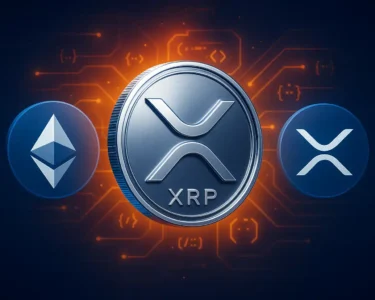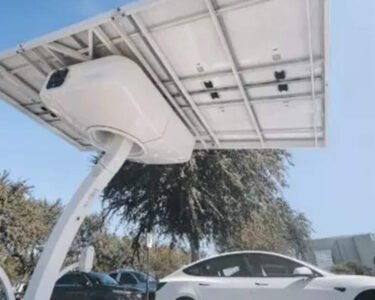As the countdown to the Lok Sabha election begins, doubts over the accuracy and fair use of electronic voting machines (EVMs) have deepened in certain sections of society and among Opposition parties. This has led to protests on the streets, even as a bitter battle has broken out on social media platforms over the question of the authenticity of EVMs.
But issues related to voting through EVMs are so varied, complicated and vexed that no definite answers have so far been offered by the Election Commission of India (ECI). Nor have any steps have been taken to completely clear the doubts that may lurk in the electorate’s mind.
Protest against EVMs
It is against this backdrop that Congress and many organisations decided to fight against EVMs. Several activists from these organisations, concerned citizens and voters led by Congress veteran Digvijaya Singh, held a day-long protest on the morning of February 22, against the use or suspected misuse of EVMs in polls.
The protest ended with Digvijaya Singh and several of his supporters being detained for a couple of hours at Parliament Street police station in New Delhi.
Shortly after the protest started, Delhi police ensured the protestors, who included activists from the recently formed EVM Hatao Morcha, were prevented from moving out of the Youth Congress office on Raisina Road in Delhi. This is because the Union government had denied permission to EVM Hatao Morcha activists to gather at the nearby Jantar Mantar to protest against their lack of faith in EVMs.
The permission for the protest was denied citing that Section 144 Cr PC had been imposed in Delhi earlier this month to bar a gathering of five or more persons in view of the farmers’ agitation.
What protestors wanted
Yet, many anti-EVM protesters managed to get around the police barricades to reach the designated protest spot. They were quickly dispersed and some rounded up and ferried to nearby police stations in vehicles. The police did their best to thwart the protest spearheaded by Congress and other Opposition parties’ leaders, besides lawyers groups, farmers representatives and civil rights activists, from gaining momentum.
The protestors made their demands clear: They wanted the ECI to come clean on the reason for continuing to use EVMs despite apprehensions of them being “hacked, tweaked or tinkered” with to allegedly favour the ruling party.
Demand for ballot paper
A couple of days before the February 22 protest, former MP and convener of the front formed against EVM, Udit Raj, raised some questions about EVMs at a press conference held in Delhi. He demanded that polls should be held through ballot paper or fool-proof safeguards like handing over the paper trail to the voter before it is put by him or her in a separate box for counting to match and authenticate the results produced by EVMs.
At the February 20 press conference, Raj posed 10 questions for ECI to answer, alleging that the election commissioners have been shying away from meeting Opposition leaders. Instead, they have just posted “FAQs in a tardy and drab way” about EVMs on the ECI website, he said.
Three key findings
He quoted three findings of a Citizens’ Commission on Elections headed by former Supreme Court Judge Justice Madan Lokur. The members of the Commission were seasoned former bureaucrats who had interviewed technological experts on EVMs. Some of their key findings:
a) EVM does not provide provable guarantees against hacking, tampering and spurious vote injections
b) VVPAT (Voter-Verifiable Paper Trail) system does not allow the voter to verify the slip before the vote is cast
c) Due to the absence of end-to-end (E2E) verifiability, the very design of the present EVM system is unfit for democratic elections
EVM’s components
Raj also disputed ECI’s claim that the three components of EVM – ballot unit, VVPAT and control unit – are totally standalone machines having one-time programmable chips. He said: “With the introduction of VVPATs, the name and symbol of the candidates will have to be uploaded to EVM using an external device after the announcement of elections and the finalisation of the candidate list.
“This despite the ECI saying that engineers in government-controlled EVM manufacturing units Bharat Electronics Limited (BEL), Bengaluru, and Electronic Corporation of India Limited (ECIL), Hyderabad, use a device called symbol loading unit (SLU) to electronically upload candidates and parties details onto the EVMs. The SLUs are not kept in a strongroom along with EVM/VVPATs and are released to engineers immediately after the polls. This takes the SLUs outside the custody of poll Returning Officers.
“This wired connection of EVM/VVPATs to an external device not maintained within the custody chain of Returning Officers/district election officers after election is announced, once the candidate sequence is firmed up, and second randomisation of booth allotment of EVMs finalized, make the ECI’s practices in conducting elections extremely suspect. It exposes the voting and counting to insider/outsider manipulation.”
Chandigarh mayor election
Raj spoke to the media the day the Supreme Court significantly reversed the outcome of the Chandigarh Mayor’s election following a recount of votes by the court.
He told The Federal: “India is the only country where the top court has to see the ballot and recount votes (in the case of the Chandigarh mayoral election). If this had been an electronic ballot, the court could have hardly done the recheck. The intent towards every possible manipulation on the part of the rulers and institutions working under their shadows is so palpable that there can be little hope about EVM remaining unharmed.”
‘Leave it to ECI’
Even as criticism against EVM is growing among activists and politicos alike, some Congressmen think differently.
A senior Congress functionary, who has been given a key role in drafting the party manifesto, recently interacted with a few media persons to discuss media freedom and related issues.
Asked about his views on EVMs, he shot back: “Making noises over it cannot take us too far. It can well be taken as a sign of weakness on our or the part of the Opposition. We should leave it to the ECI and courts rather than taking it up ourselves. Public concerns are too many and, thus, the electorate may not like us to throw up our hands over EVMs at this stage. By doing so, we could make the incumbent government incontestable and lead to a situation where people may feel resigned to their fate and may well say that they don’t want to vote when EVMs are going to make the BJP win.”
Constitutional violation
Yet, those against EVMs pointed out that under the paper ballot system, the ECI had control over the entire election process but with EVMs, it has almost completely lost control.
Therefore, according to anti-EVM activists, elections conducted through EVMs violate the mandate given to the ECI by the Constitution under article 324 (1) to hold elections for Parliament, state legislatures, president and vice-president with full and sole control and responsibility over these polls.




